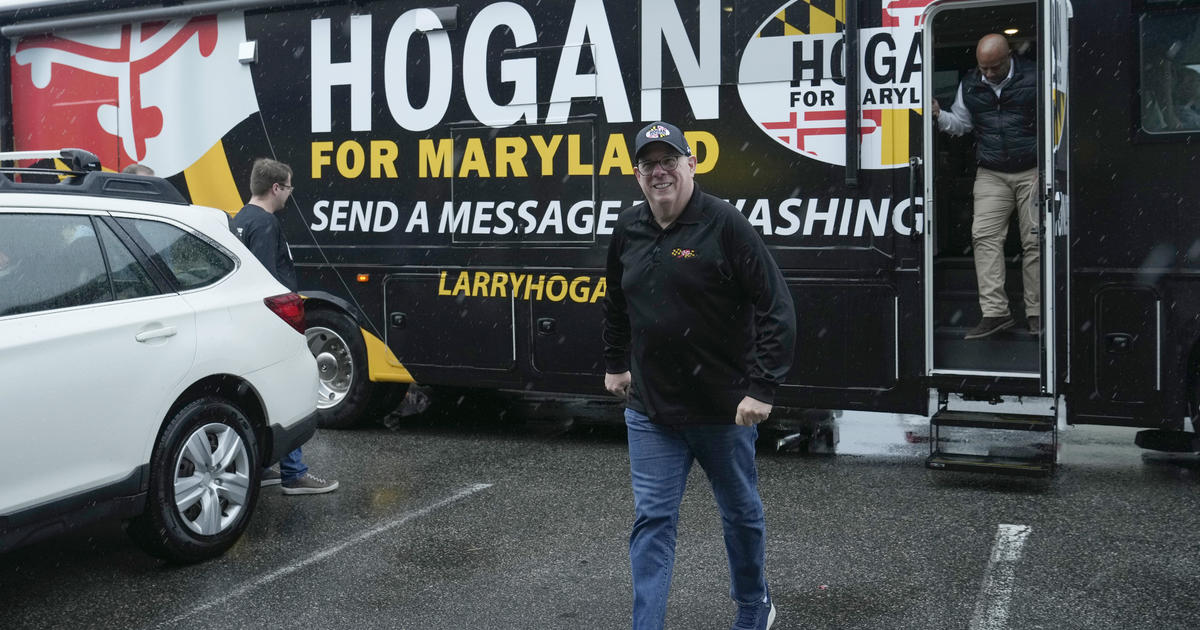College Becoming Less Affordable For Maryland Students
ANNAPOLIS, Md. (AP) -- During this past election cycle, presidential candidates Bernie Sanders and Hillary Clinton both highlighted increasing college debt as one of the most important issues in the country.
Since the 2008 economic recession, student loan debt is the only form of consumer debt that has continued to increase, surpassing auto and credit card loans, according to the Federal Reserve Bank of New York.
Fifty-eight percent of Maryland undergraduates from public and private nonprofit four-year institutions who graduated in 2014 had debt, and the average total was $27,457, according to the Project on Student Debt.
Many of the reasons loans have increased is because the price to attend college, even at state schools that subsidize costs for some students, has also increased, including in Maryland.
In 2007, the in-state cost of tuition at the University of Maryland, College Park was $6,566. For Maryland residents who enrolled this academic year, the cost of tuition is $10,180.
The University of Pennsylvania's Graduate School of Education created a report diagnosing college affordability in Maryland and found, "Despite Maryland's strong overall showing on college affordability, the state's public institutions -- enrolling 90 percent of Maryland students -- have declined in affordability since 2008."
This is especially true for the state's most economically disadvantaged areas.
"Putting food on the table seems to be a higher priority than going to college," said Cindy Clement, an economics professor from the University of Maryland. "Paying for the price of college requires a lot of means testing; poor people are less able to document what their income is."
For public two-year institutions in 2008, the percentage of average family income to attend college full time in Maryland was 17 percent. This number only increased by 1 percent by 2013, but it ranks 33rd in country, according to Penn's report. Public two-year institutions enrolled 45 percent of Maryland students.
The report also estimates that students would need to work 23 hours a week at minimum wage to attend community college and about 40 to pay for tuition and fees at any four-year institution.
Maryland's most disadvantaged areas in terms of net price as a percent of family income for four-year institutions include the state's Eastern Shore, Baltimore City and western Maryland.
Under the University System of Maryland, which comprises 12 of the state's public institutions, tuition, on average, has increased a little less than 3 percent annually since 2009. The system's budget totals $5 billion annually.
"If you think about budgeting that, you want to be able to deliver the services and necessities students need on campus," system spokesman Mike Lurie told the University of Maryland's Capital News Service. "Costs include not only having functional facilities but also safe facilities."
Clement explained that the cost to attend college has also increased because of students' expectation for technology to be integrated into the learning experience.
"Technology has gotten more expensive but has not necessarily lowered the cost of education," said Clement, who teaches a course on the college affordability crisis.
As the job market in certain industries becomes more competitive, the value of a college degree increases, which Clement also attributes to the increased cost to attend school. The Penn report ranked Maryland 16th in terms of states with the highest percentage of jobs that will require a postsecondary credential in the future.
As of 2014, 46 percent of young adults and 47 percent of working-age adults in Maryland had an associate's degree or higher, compared to the national averages of 42 and 40 percent, respectively, according to Penn's report.
"The value of a college education has gone up so more people are seeking it," said Clement, who added that the cost to pay professors also has increased. "Highly educated individuals command a higher wage. That means you have to pay them more to teach."
However, some Marylanders are working to mitigate the college affordability problem.
Joe Fisher is the president and CEO of First Generation College Bound, which is a college access program that helps its participants, who are primarily moderate to low income, secure financial opportunities.
For 27 years, Fisher and his organization have been helping high school students understand their financial situation and look for grants and scholarships that greatly decrease the cost to attend school. Fisher advises many of his participants who are from Maryland to consider attending in-state schools that provide many financial aid opportunities to their students.
"Many of these students do not realize they can attend college; the money is there," Fisher said. "Our goal is not only to students to be accepted and attend but also to be able to stay there and graduate."
Dontra Scott was one of these children who never believed he could attend college. Although he performed well in school, Scott was raised by a single mother in Columbia, Maryland, and no one from his family ever graduated from college.
Fisher was Scott's sixth-grade teacher and through his guidance and mentorship, Scott was able to attend college at the University of Maryland from 2002 to 2006, only taking out one loan for $2,000.
"One thing I love about this country is that they do have a lot of grants and scholarships for people whose parents aren't making that much money," Scott said.
Although Scott wanted to attend Florida State when applying to schools, he said Fisher discouraged him from that because he would have to take out thousands of dollars in loans. Fisher advises students to attend schools that do not require taking out huge amounts in loans, even if it is a dream school.
"College affordability is about going where you can afford to attend," he said. "Parents and students clearly understand the excitement of college acceptance, not the commitment to understanding financial aid."
(Copyright 2016 by The Associated Press. All Rights Reserved.)



